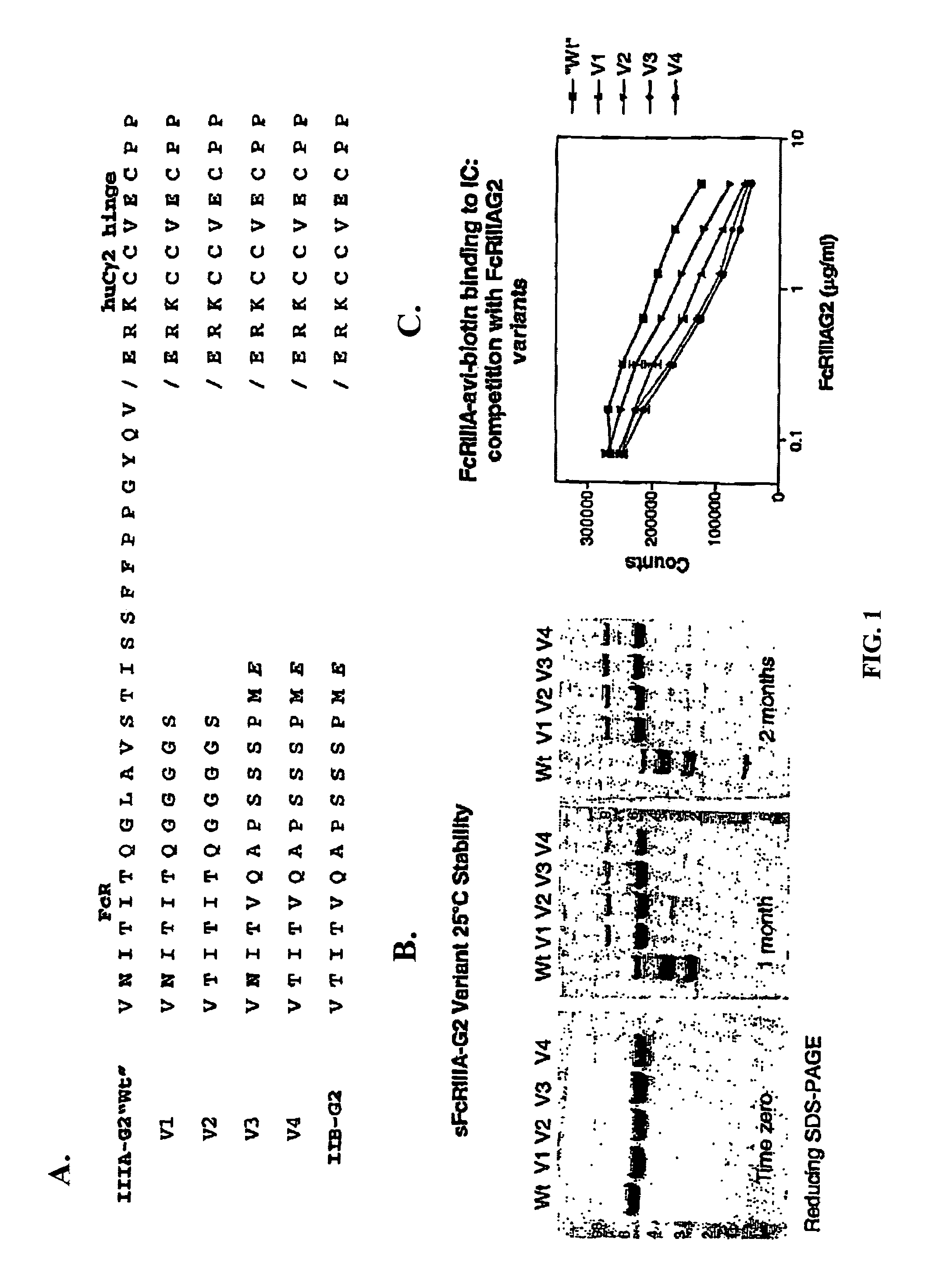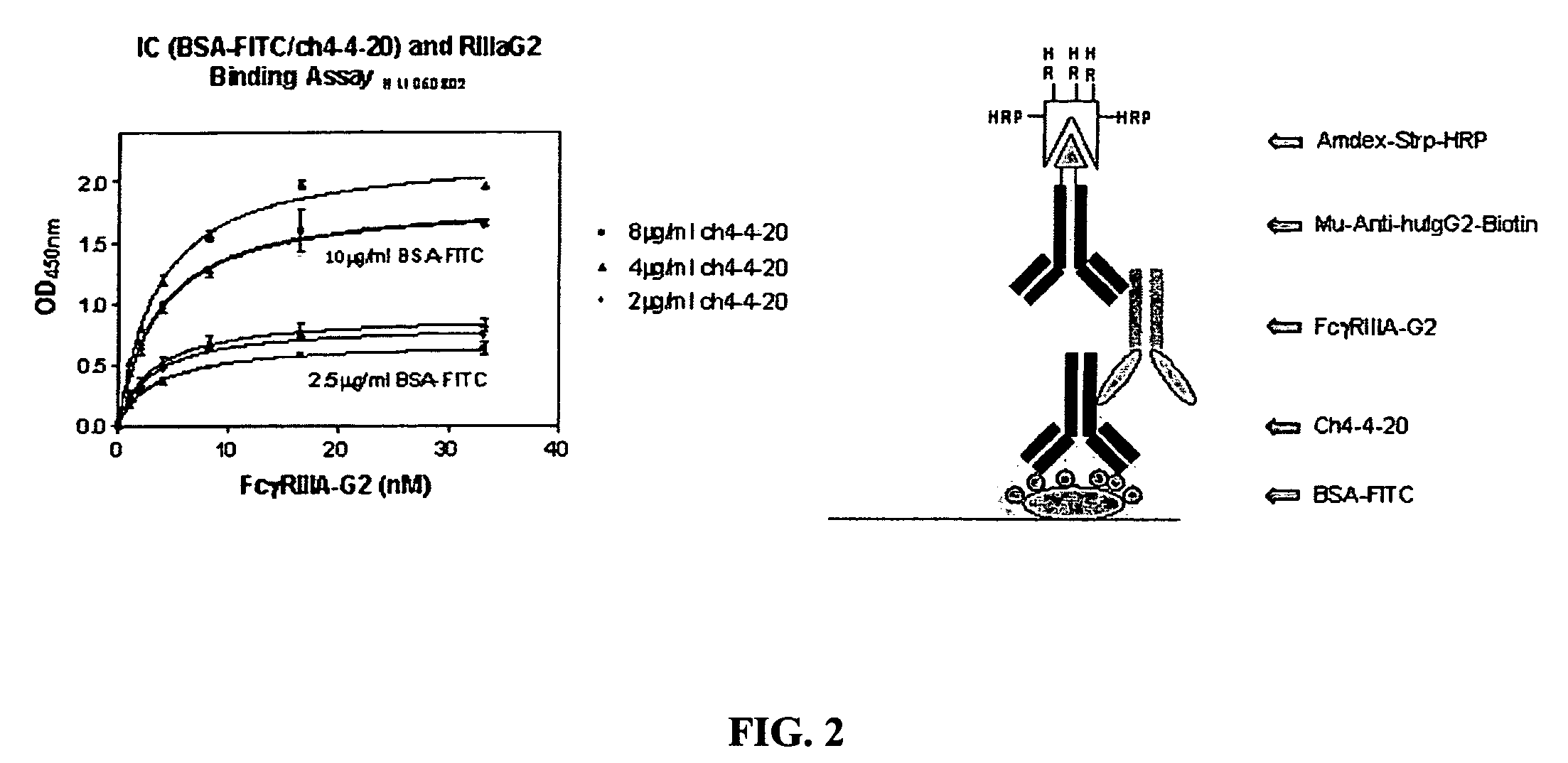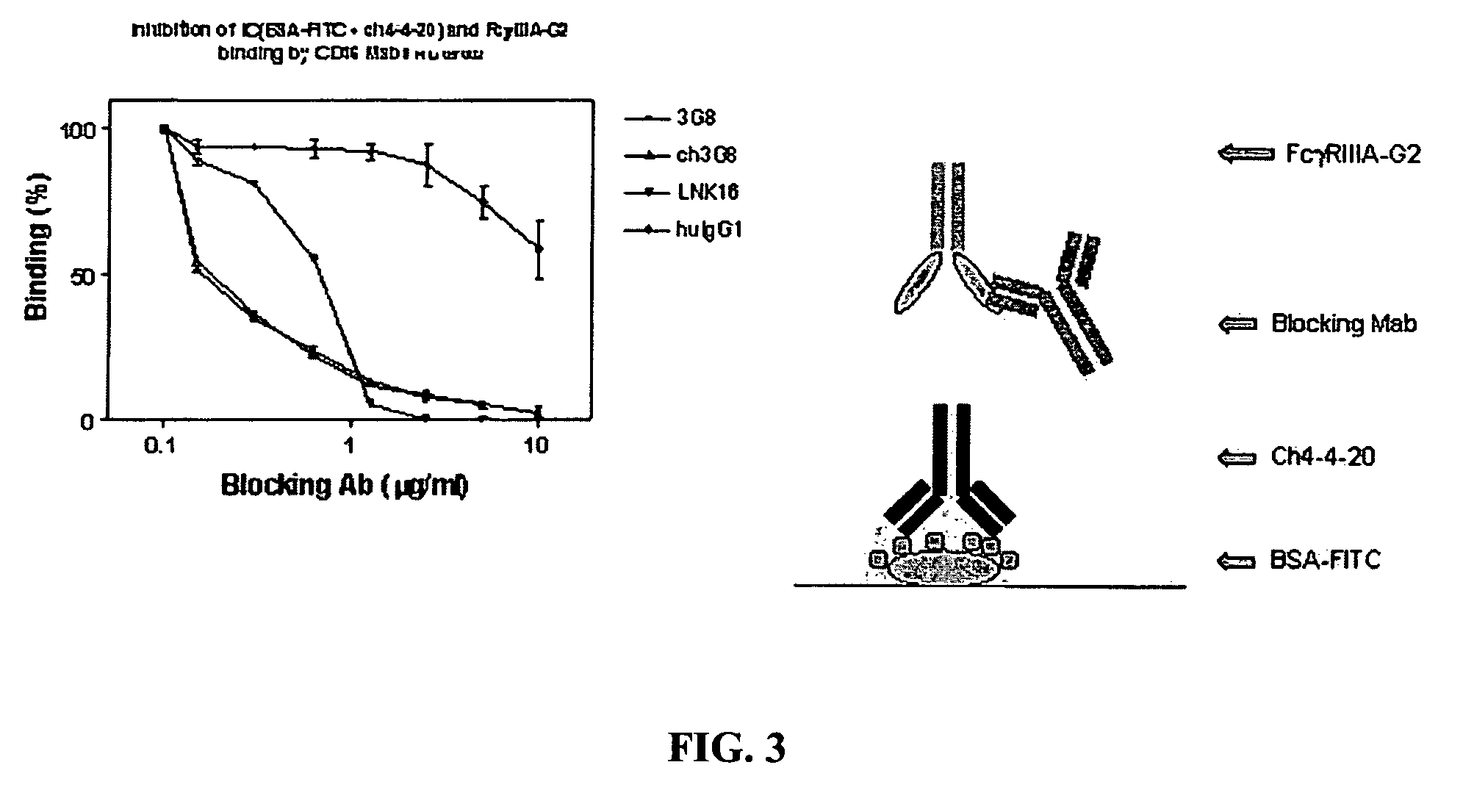FcγRIIB fusion proteins and compositions thereof
a technology of fusion proteins and fusion proteins, applied in the field of molecules, can solve the problems of destroying the cells of chronic inflammation, affecting the activity of immune effectors, and destroying the antigen quickly, and achieve the effect of no loss of biological activity
- Summary
- Abstract
- Description
- Claims
- Application Information
AI Technical Summary
Benefits of technology
Problems solved by technology
Method used
Image
Examples
Embodiment Construction
[0126]5.1 Soluble FcγR Proteins
[0127]The present invention encompasses soluble FcγR proteins, e.g., the extracellular region of FcγR comprising an Fcγ binding site. The invention particularly relates to soluble FcγRIIIA and FcγIIB proteins. In one embodiment, the soluble protein of the invention corresponds to the extracellular region of FcγRIIIA, positions 140-715 of the cDNA encoding FcγRIIIA. In another embodiment, the soluble protein corresponds to the extracellular region of FcγRIIB, positions 137-676 of the cDNA encoding FcγRIIB. In some embodiments, the invention encompasses soluble FcγRIIIB and FcγRIIA proteins.
[0128]The invention also encompasses soluble FcγR proteins comprising any of the allelic variants known to those skilled in the art, e.g., such as those disclosed in Warmerdam et al., 1991, Journal of Immunology, 147: 1338-43; Kim et al., 2001, J. Mol. Evol. 53: 1-9; Fijen et al., 2000, Clin. Exp. Immunol. 120: 338-345; Fujiwara et al., 1999 Vox Sang. 77: 218-222; Pet...
PUM
| Property | Measurement | Unit |
|---|---|---|
| concentrations | aaaaa | aaaaa |
| concentrations | aaaaa | aaaaa |
| concentrations | aaaaa | aaaaa |
Abstract
Description
Claims
Application Information
 Login to View More
Login to View More - R&D
- Intellectual Property
- Life Sciences
- Materials
- Tech Scout
- Unparalleled Data Quality
- Higher Quality Content
- 60% Fewer Hallucinations
Browse by: Latest US Patents, China's latest patents, Technical Efficacy Thesaurus, Application Domain, Technology Topic, Popular Technical Reports.
© 2025 PatSnap. All rights reserved.Legal|Privacy policy|Modern Slavery Act Transparency Statement|Sitemap|About US| Contact US: help@patsnap.com



